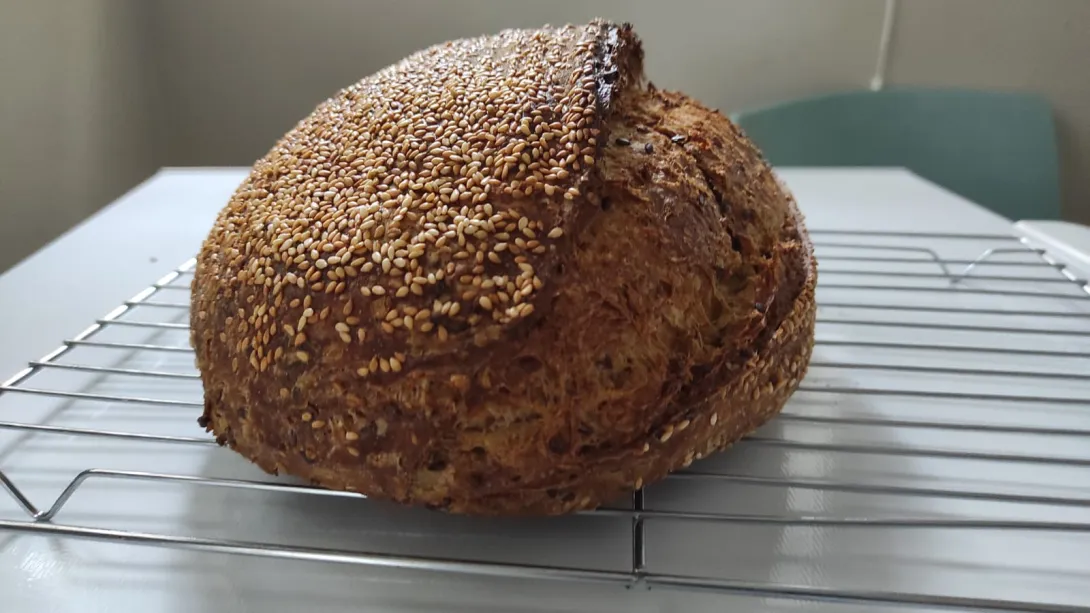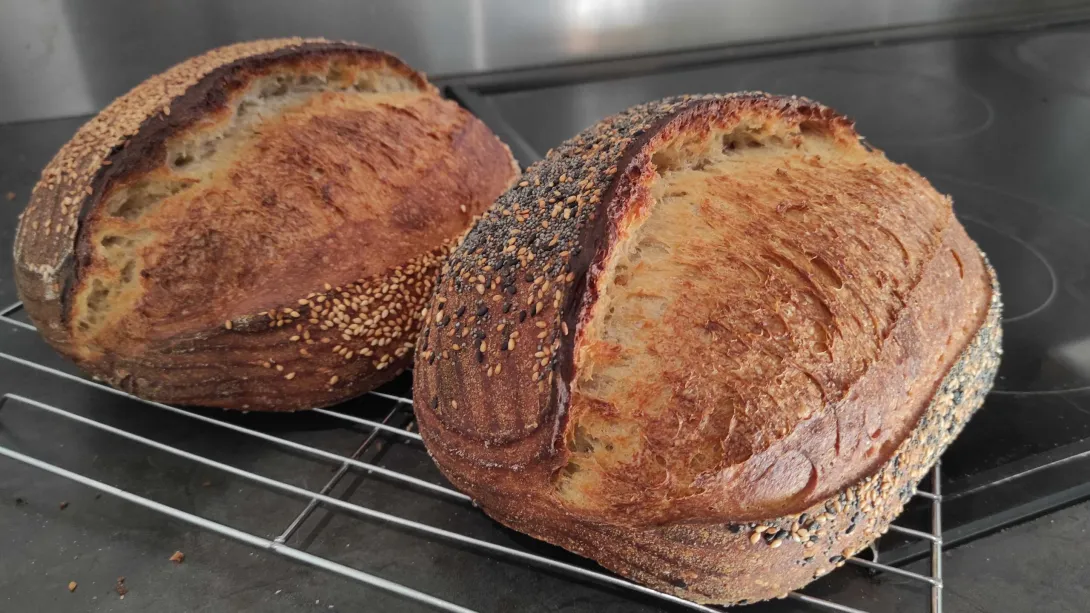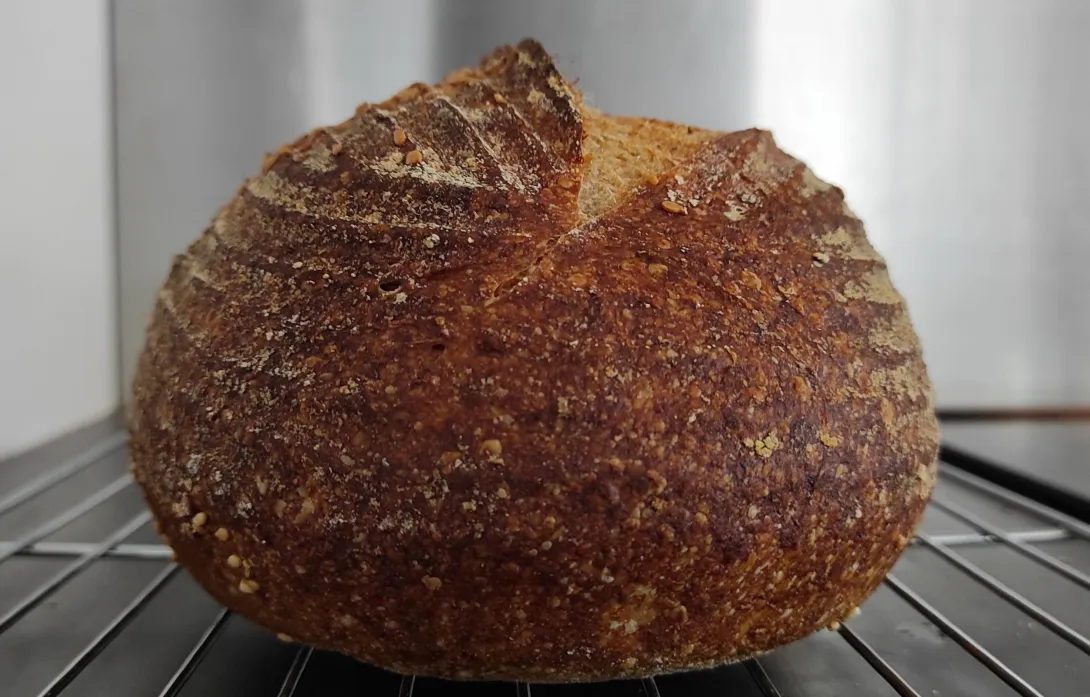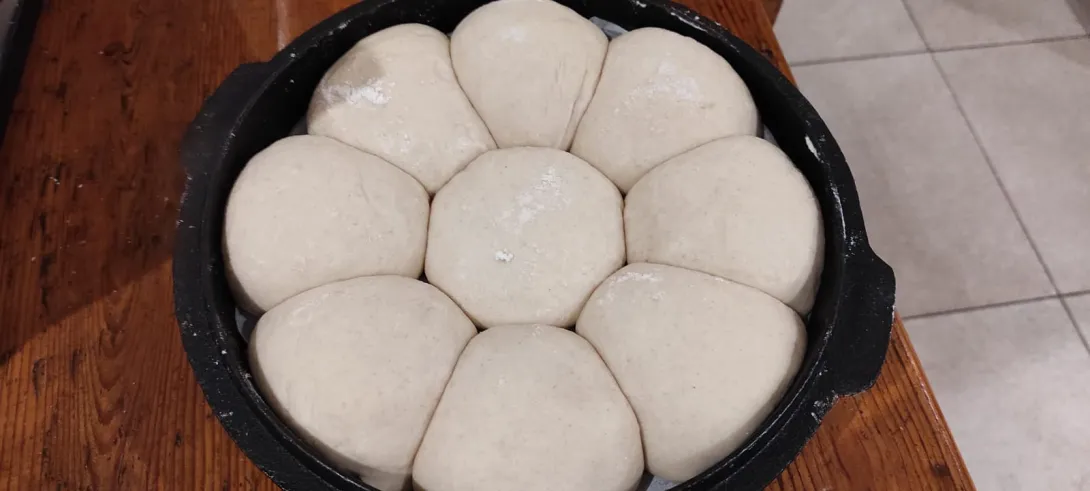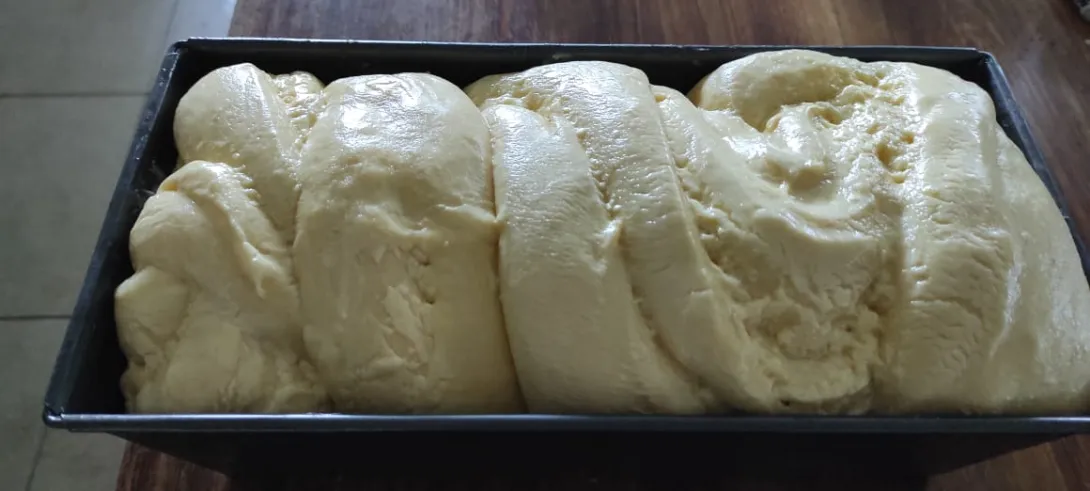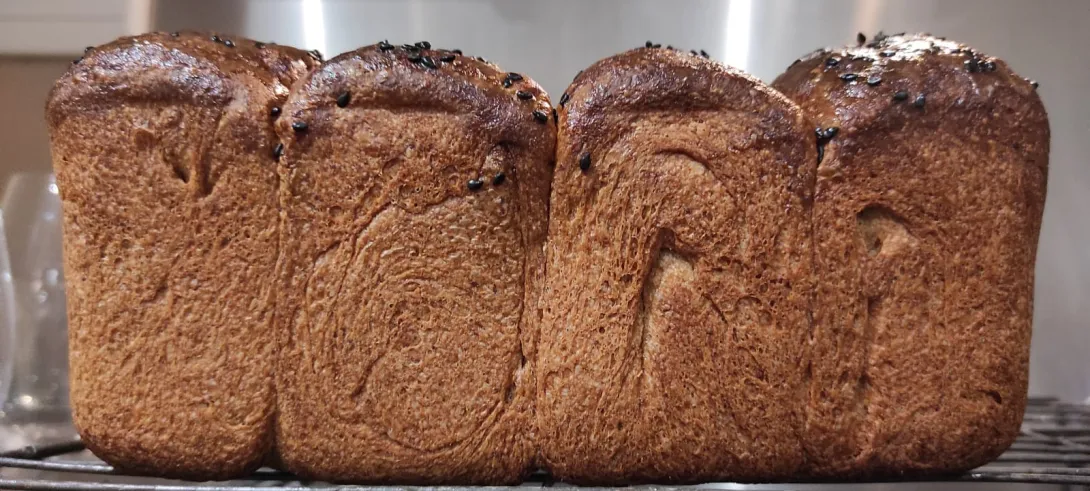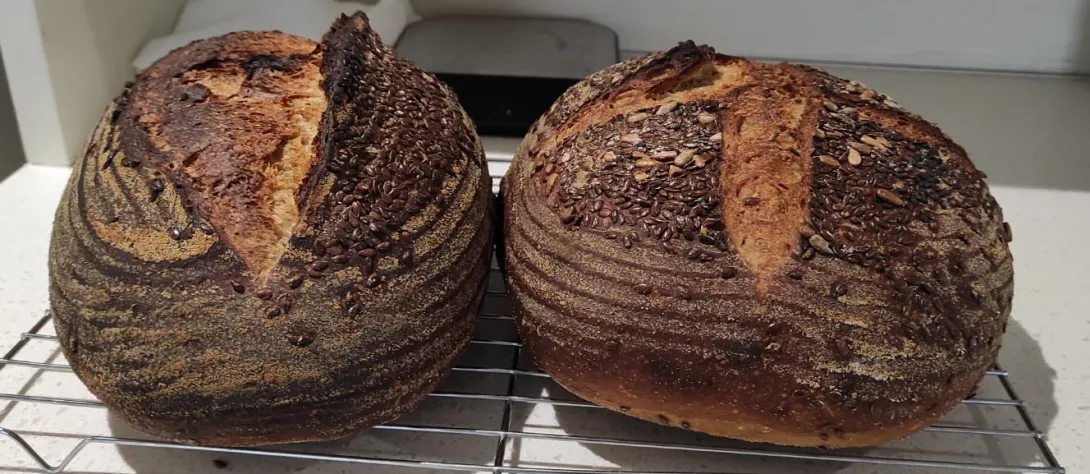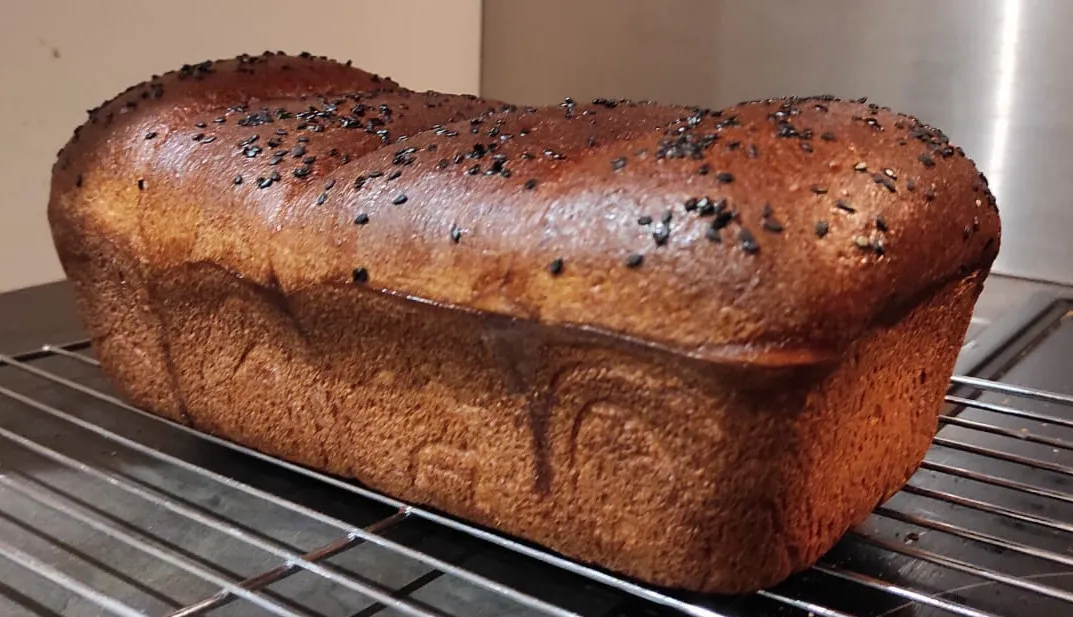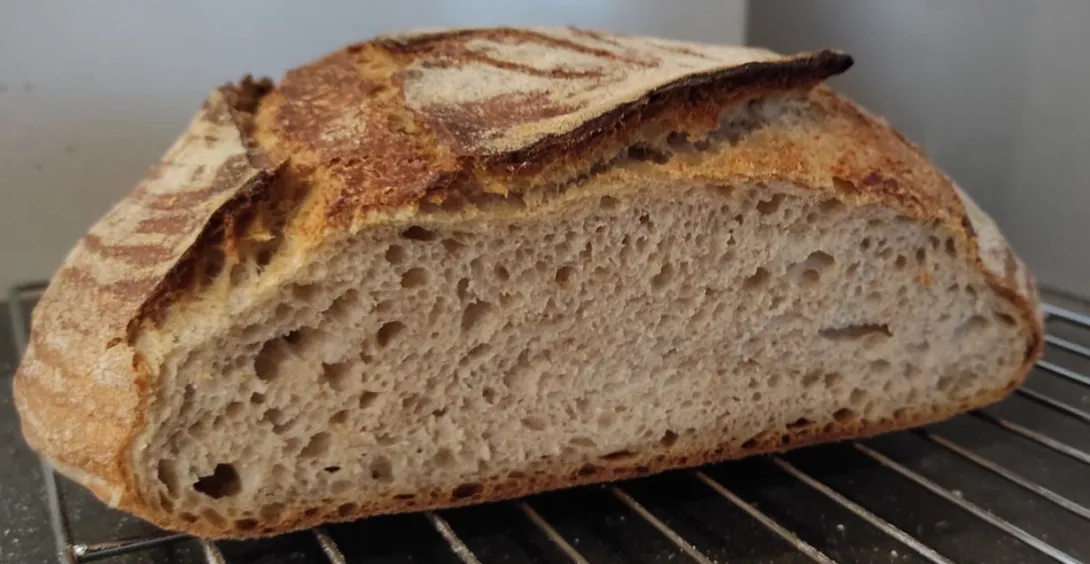Hummus and Miso Sourdough
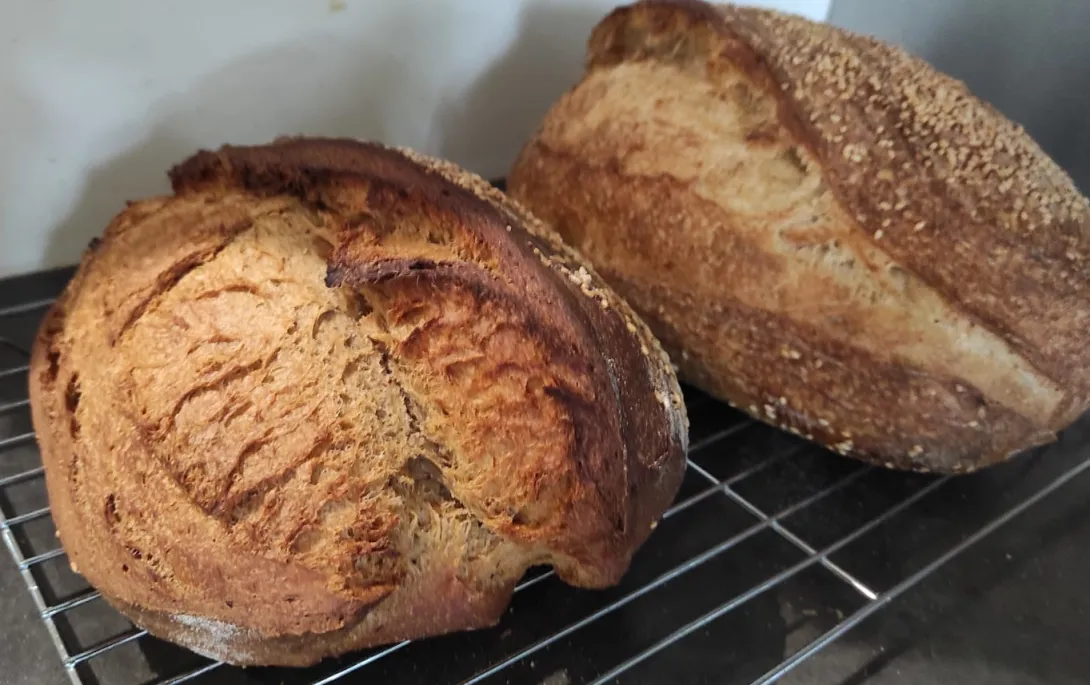
When it comes to omelette fillings the combination of miso paste and hummus is complementary and comforting, although I suspect I'm the only one who tries something like that with their eggs. And, it is true that miso, and hummus, when spread on hot buttered toast are simply delicious. So, my thinking was that together they could make for a great combination in a bread, even if it is difficult to imagine!
